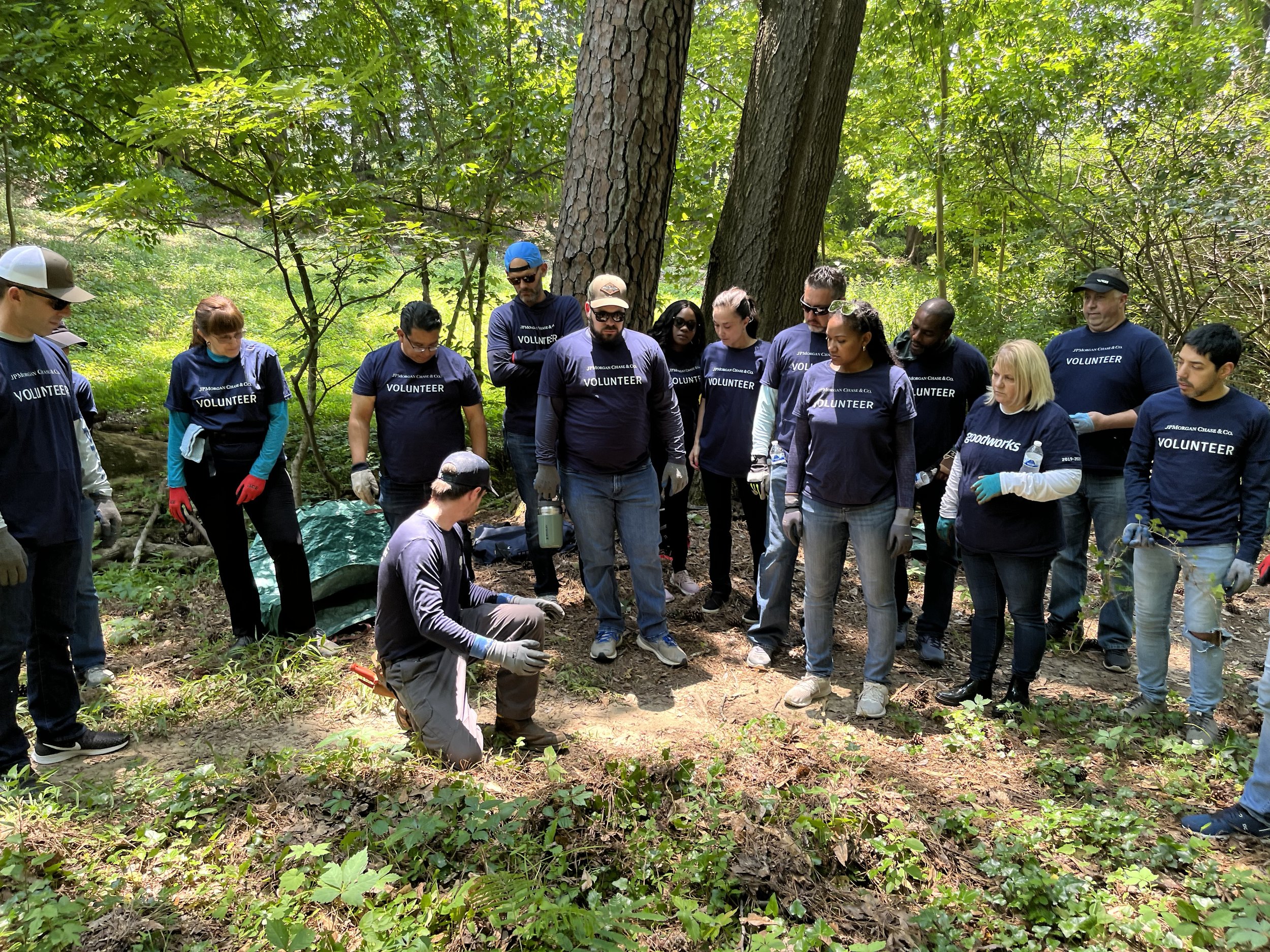
Woods Keeper at
Chastain Park

Chastain Park Spring Update 5.21.24
Spring is in full swing and so are we! We’ve been targeting invasive kudzu both in the valley near Lake Forest Dr. and at Hamburger Pond. We planted some native Lizard’s Tail, a wonderful wetland plant, in both of those areas but that’s only a small part of the story right now.
Native plants are thriving everywhere! So, so many have been planted by the Chastain Park Conservancy not only around our work areas but throughout the entire park. The Eagle Scout plantings (native ferns, sedges, hydrangeas) near the creek are doing great. And the native seed bank is responding in a big way in our work areas where we’ve removed invasive plants including a variety of native sedges!
As we head into summer our work will continue along the slope on Lake Forest Dr. as we target invasive English ivy, multiflora rose, and more. If you ever see us working in the park please don’t hesitate to ask questions or just say hi. We love to talk about the work and spread awareness about invasive plants!
— Woods Keeper Crew
Invasive Kudzu crown
Native Lizard’s Tail Saururus cernuus
Native Sedges!
Overview:
In Spring of 2022 Woods Keeper began work at Chastain Park in an area once nicknamed “kudzu canyon” that’s no stranger to restoration work. Many native plants like trillium, buckeye, sunflower, goldenrods, and asters are naturally returning in some areas while remaining invasive plants like English ivy still dominate in others (before-&-after shown below). Other targeted non-native invasive plants include privet, porcelain berry, elaeagnus, stiltgrass, and multiflora rose.
Working alongside Chastain Park Conservancy who is actively planting native plants throughout the park, Woods Keeper is continuing restoration efforts to remove and suppress these harmful invasive plants while nurturing the native plants and trees that support our local ecosystem. A small offshoot of Nancy Creek runs through the area supporting healthy populations of jewelweed, American jumpseed and much more. The stream flows over the roots of an enormous green ash tree (shown below), a tree so big it made the Atlanta Champion Tree list at #2 for this endangered species.
As the transformation unfolds from an unhealthy and overwhelmed landscape to a biodiverse and abundant woodlands, beauty will naturally follow. Check back for updates, or better yet come see for yourself!
**Does native habitat restoration mean every plant that’s non-native will be removed? No. We believe non-native plants can have a place in landscapes as long as they are not invasive. This issue is not black and white and often requires a nuanced discussion involving the specifics of the site.
Not only does invasive plant removal improve the health and beauty of our natural areas, it also makes trails more inviting.
Brian Barnes of Chastain Park Conservancy and Eli Dickerson of Park Pride measure the large green ash (Fraxinus pennsylvanica).
A host to swallowtail caterpillars and many moths, green ash trees also provide cover and food to many bird and animal species. The green ash has rapidly become endangered in North America due to the Emerald Ash Borer, an invasive beetle whose larvae feed on the inner bark ultimately killing the tree.
Still seemingly healthy for now, this green ash at Chastain Park measures over 11 feet in circumference, 100 feet high, and 60 feet in average crown spread putting it at #2 on Trees Atlanta’s Champion Tree list.



















